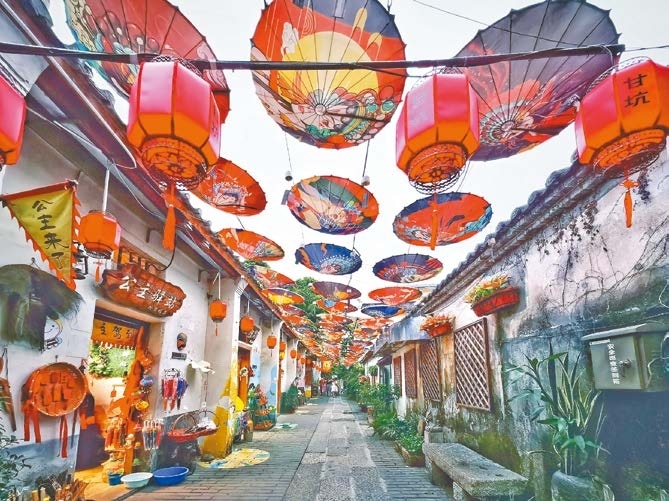
TUCKED away within the city of Shenzhen lies Gankeng Ancient Town, a serene oasis steeped in history and culture. Dating back to the Ming (1368-1644) and Qing (1644-1911) dynasties, this ancient village in Longgang District is one of Shenzhen’s 10 best-preserved historic towns. To improve accessibility, Shenzhen Bus Group has launched a new shuttle line, T124, connecting Gankeng Station (甘坑站) on Metro Line 10 directly to the south entrance of the ancient town. This dedicated single-loop route offers convenient and efficient transfers from the subway to the scenic area. T124 shuttle line details Terminus: Metro Line 10, Gankeng Station (甘坑站), Exit B Stops: West of Jihua Subdistrict Office, Gankeng Xincun Estate, south entrance of Gankeng Ancient Town Service hours: 10 a.m. to 7 p.m. daily Frequency: Every 10 minutes on weekdays; every 5 minutes on weekends; buses also depart as soon as they are full Fare: 2 yuan (US$0.30) per ride Charm of Gankeng A must-see architectural gem in Gankeng is the Nanxiang Tower, which uniquely blends Minnan-style (southern Fujian Province) design with Hakka cultural elements. Over 120 years old, Nanxiang Tower was originally relocated from southern Fujian and showcases impressive traditional craftsmanship with its large solid wooden framework and “building within a building” structure. Another cultural treasure is the Zhuangyuan Mansion, once the residence of a Liu family scholar who earned the prestigious title of “zhuangyuan” — the top scorer in the imperial examinations during the Qing Dynasty’s Yongzheng era. Built more than 300 years ago with support from local gentry, the mansion honors this prodigy from Wuyuan, Jiangxi Province. At the cultural heart of Gankeng lies Phoenix Valley, a traditional activity complex composed of four ancient Hui-style buildings: Shouzi Tower, Fenglou Tower, Fuzi Tower, and Qilin Tower. Each of these houses a museum or pavilion — Pottery, Jade, Metalware, and Phoenix Pavilion respectively — providing a rich showcase of local heritage through exhibitions and architecture. Equally significant is the Gankeng Fortress Tower, located at the Fortress Memorial Square. Constructed in 1919, this landmark stands as a symbol of the enduring Hakka community in the region. Recognized for its cultural importance, the fortress was designated a protected cultural relic by Longgang District in 2016. (Claudia Wei) | 
